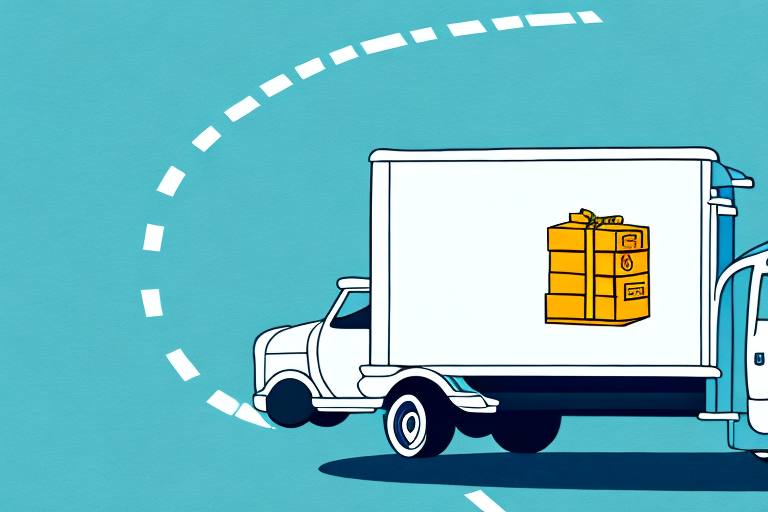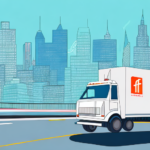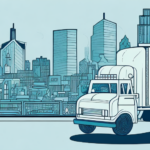Optimizing Last Mile Distribution for Maximum Efficiency
Last mile delivery, also known as final mile delivery, is the final stage of the delivery process where goods are transported from a centralized distribution center to the end customer's doorstep. It is often considered the most critical and expensive part of the delivery process, accounting for up to 28% of the total delivery cost. In this article, we will explore the concept of last mile distribution and why optimizing it is important for businesses. We will also discuss the factors that affect last mile efficiency and strategies to reduce last mile delivery costs.
Understanding Last Mile Distribution
Last mile delivery refers to the transportation of goods from the nearest distribution center to the final point of delivery, typically the customer's doorstep. This stage involves several logistics and transportation activities, including route planning, package sorting, and customer communication. Last mile delivery is often challenging because it involves meeting diverse customer needs, varying delivery circumstances, and delivery time constraints.
Challenges in Last Mile Delivery
One of the key factors that make last mile delivery challenging is the increasing demand for same-day or next-day delivery. Customers expect their orders to be delivered quickly and efficiently, which puts pressure on logistics companies to optimize their last mile delivery processes. To meet this demand, companies are exploring new technologies such as drones and autonomous vehicles, as well as partnering with local delivery services to improve their last mile delivery capabilities.
The Importance of Optimizing Last Mile Delivery
Optimizing last mile delivery is essential for businesses because it helps improve the overall customer delivery experience, increase customer satisfaction, and reduce delivery costs. Efficient last mile delivery leads to faster delivery times and reduced delivery errors, which can lead to increased customer loyalty and retention, resulting in improved business growth.
Enhancing Customer Experience
Efficient last mile delivery contributes to a positive customer experience by ensuring timely and accurate deliveries. According to a study by UPS, 68% of customers are willing to pay more for faster delivery, highlighting the importance of speed in enhancing customer satisfaction.
Cost Reduction
Last mile delivery can account for a significant portion of total delivery costs, often up to 28%. By optimizing routes and improving delivery processes, businesses can substantially reduce these costs. Implementing technologies such as route optimization software can lead to cost savings of up to 10-15%, according to ShipScience.
Key Factors Affecting Last Mile Efficiency
Several factors affect last mile efficiency, including traffic congestion, inadequate transportation infrastructure, poor road conditions, and a shortage of qualified drivers. Other factors that can negatively impact last mile delivery include package theft, inaccurate address information, and customers missing deliveries. As a result, businesses must consider these factors when developing an effective last mile distribution strategy.
External Factors
- Traffic Congestion: Heavy traffic can significantly delay deliveries.
- Weather Conditions: Extreme weather events like heavy rain or snow can cause disruptions.
- Infrastructure: Poor road conditions and inadequate transportation networks can hinder delivery efficiency.
Operational Challenges
- Driver Shortages: A lack of qualified drivers can slow down delivery processes.
- Package Theft: Increased instances of package theft can lead to customer dissatisfaction.
- Incorrect Addresses: Inaccurate address information can result in failed deliveries and increased costs.
Leveraging Technology and Data Analytics
Technology plays a crucial role in improving last mile delivery. For instance, route optimization software can help reduce delivery times by identifying the fastest and most efficient routes for drivers. GPS-based tracking software can provide real-time updates on delivery status, enabling businesses to communicate with customers effectively. Additionally, mobile applications can help drivers track deliveries and communicate with customers easily.
Advanced Technologies
Another way technology can improve last mile delivery is through the use of drones. Drones can be used to deliver packages to remote or hard-to-reach areas, reducing delivery times and costs. They can also be used to deliver urgent medical supplies or emergency items during natural disasters.
Data Analytics
Data analytics is another critical tool that businesses can use to optimize last mile delivery. By analyzing delivery data, businesses can identify trends and patterns, optimize routes, predict delivery times, and improve overall performance. For instance, businesses can leverage machine learning algorithms to predict future demand and optimize delivery routes, reducing delivery costs and improving overall efficiency.
Strategies to Reduce Last Mile Delivery Costs
Reducing last mile delivery costs is a crucial component of optimizing last mile delivery. Businesses can adopt several strategies to reduce delivery costs, including:
- Optimizing Delivery Routes: Using route optimization software to find the most efficient paths.
- Sharing Economies of Scale: Collaborating with other companies to share delivery resources.
- Alternative Delivery Options: Utilizing drones or autonomous vehicles for deliveries.
Implementing Real-Time Tracking
Implementing a real-time tracking system allows businesses to monitor the delivery process and make necessary adjustments to optimize routes and delivery times. Additionally, offering customers the option to choose specific delivery times or locations can help reduce missed deliveries and the need for multiple delivery attempts.
Local Pickup Points
Partnering with local businesses or utilizing local pickup points can reduce the distance and time required for last mile delivery. This approach not only cuts costs but also minimizes the environmental impact of delivery vehicles.
Collaborations and Partnerships
Collaborating with local partners can help businesses improve last mile delivery. Local partners can provide businesses with a better understanding of local delivery conditions and help them navigate regulatory frameworks and logistics challenges. Additionally, local partnerships can help businesses reduce delivery times, increase delivery accuracy, and improve the overall customer delivery experience.
Benefits of Local Partnerships
- Improved Delivery Accuracy: Local partners have better knowledge of the area, leading to more accurate deliveries.
- Cost Savings: Shared resources and infrastructure can lead to significant cost reductions.
- Sustainability: Optimized routes and eco-friendly transportation options can reduce the carbon footprint.
Sustainability and Environmental Impact
Sustainability is an essential consideration in the last mile delivery process. Businesses are under increasing pressure to adopt sustainable practices that reduce their carbon footprint and contribute to climate action. Strategies like electric vehicles, bike couriers, and optimization of routes can help reduce the environmental impact of last mile delivery.
Eco-Friendly Transportation
Utilizing electric vehicles and bike couriers can significantly reduce greenhouse gas emissions associated with last mile delivery. For example, UPS has introduced electric delivery vehicles as part of their commitment to sustainability.
Route Optimization
Optimizing delivery routes not only saves time and money but also reduces fuel consumption and emissions. Implementing smart routing systems can lead to more efficient deliveries and contribute to a greener environment.
Future Trends and Challenges
Last mile delivery is undergoing significant transformation through the adoption of new technologies like drones and autonomous vehicles. Additionally, businesses are exploring alternative delivery options, such as micro-fulfillment centers and shared delivery networks. As technology advances, it is likely that businesses will continue to find innovative ways to optimize last mile delivery to improve the overall customer delivery experience.
Emerging Technologies
- Drones and Autonomous Vehicles: These technologies promise faster and more cost-effective deliveries.
- Micro-Fulfillment Centers: Small, local fulfillment centers can speed up delivery times and reduce transportation costs.
Challenges Ahead
Despite advancements, businesses face challenges such as regulatory hurdles, technological disruptions, and increasing customer expectations. Addressing these challenges requires continuous innovation and strategic planning.
Case Studies: Successful Optimization Examples
Several businesses have successfully optimized their last mile delivery, resulting in significant benefits. For example:
- Amazon Prime: Amazon has invested heavily in last mile delivery through its Prime service, where customers can receive same-day delivery of their orders.
- UberEats: A subsidiary of the rideshare app Uber, UberEats has achieved success in last mile delivery through its real-time order tracking and efficient food delivery.
- DHL: DHL has optimized last mile delivery through the use of technology and data-driven route planning.
Conclusion: The Benefits of Optimizing Your Last-Mile Distribution Process
In conclusion, optimizing last mile delivery is critical for businesses looking to improve the overall customer delivery experience, increase customer satisfaction, and reduce delivery costs. By implementing technology, leveraging data analytics, collaborating with local partners, and prioritizing sustainability, businesses can optimize last mile delivery to achieve significant benefits. To succeed in last mile delivery, businesses must continue to prioritize customer needs and adapt to changing technological and logistical demands.




















